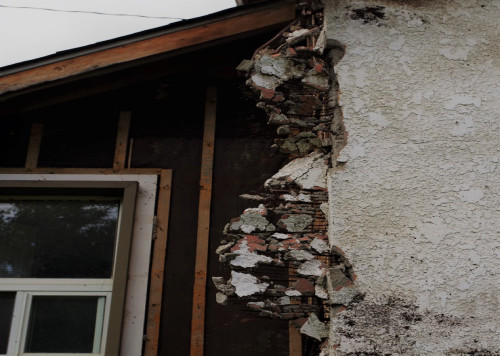Asbestos
The author of this module isJulian Eyears et al

Occupational Health Considerations
Asbestos is the generic name for six naturally occurring minerals that have been used in commercial products for their insulating properties and durability.
Asbestosis disease onset occurs after in excess of 20 years following the initial exposure to asbestos. Many nations have industrial compensation schemes for asbestos exposure at work. However the administration of these is not straightforward as workers have often moved frequently between industries 40 years prior to developing symptoms.
Interstitial lung diseases caused by particulate matter in the air are called pneumoconioses. Other examples are silicosis, stannosis from tin oxide and tin fume and farmers lung from spores grown on mouldy hay. Use of asbestos continued substantially long after harmful effects were known in the early 1900s. Although asbestos use has been banned in the UK, it is still produced elsewhere in the world due to some types having excellent insulating properties coupled with temperature tolerance. There are six types of asbestos minerals that occur naturally :-
Chrysotile is the most common and most dangerous forms of asbestos. It is mined commercially for its properties. Its fibres are long and white.
Amosite asbestos is brown with straight fibres. Amosites contaminant minerals are thought to ameliorate its insulation properties.
Crocidolite, also mined, has blue, straight fibres.
Tremolite is not mined or used commercially on its own, but could often be found contaminating other minerals, such as chrysotile and talc.
Anthophyllite is not mined, but is incidental in products made with vermiculite and talc. Miners of the latter are at high risk for developing asbestos-related diseases due to the asbestos contaminants.
Actinolite asbestos is green. This asbestos is often found as a contaminant.
All six types of asbestos are known carcinogens.
Chrysotile is considered the most hazardous asbestos fibre types. Chrysotile asbestos has also produced tumours in animals and is a recognised cause of asbestosis and malignant mesothelioma in humans.
However crocidolite asbestos is the most widely disseminated in derived products such as in the construction industries.
In the UK and many other countries, medical surveillance of asbestos workers is mandatory. Typically this involves an occupational and respiratory history, a respiratory examination and lung function tests. Routine CXRs are no longer performed but are arranged if clinically indicated.
Clinical Aspects
Asbestosis is a diffuse interstitial fibrosis of the lung. Asbestos fibre exposure many years prior is responsible.
Not all historical exposures are directly occupational.
Patients may be asymptomatic or have progressive shortness of breath.
Pleural abnormalities that are also caused by the inhalation of asbestos fibres, include plaques that may or may not be calcified, diffuse pleural thickening and benign pleural effusions. Plaques are benign but may cause chest discomfort. There is no current evidence that plaques cause impaired lung function
In contrast, extensive diffuse pleural thickening may cause breathlessness. Lung function tests may show a restrictive picture and CXR show pleural thickening.. CT scan and biopsy may provide evidence of the differential diagnosis of mesothelioma.
There is no specific treatment, only supportive or palliative. Pulmonary rehabilitation programmes are likely to be beneficial.
Cigarette smoking cessation is important due to the synergy of the disease with smoking and patients may require assistance in doing so.
Prognosis correlated with extent of fibrosis noted at diagnosis and past cumulative exposure.
Asbestosis is diffuse interstitial lung fibrosis due to exposure to asbestos fibres.
All identified forms of asbestos can cause lung cancer, ovarian cancer, laryngeal cancer and pulmonary heart disease
My reflection

